MPhil and Part II projects 2012/2013
Physical Control of a Programming Editor for Live Coding
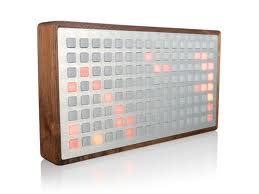
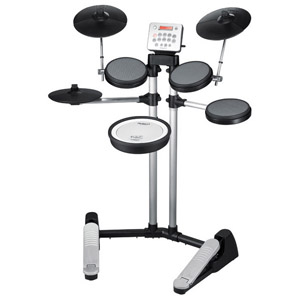
- Background
- Although a wide range of interaction peripherals are now available
for workstations, most programming editors stick with the keyboard and
mouse. Do these standard peripherals offer the most effective
interface to programming or are they just a surviving relic? What
might be the requirements of a programming environment for more
esoteric physical interfaces and how might we measure their efficacy?
- Objective
- This project will explore the opportunities alternative interfaces
offer to the programming workflow. As the context for this exploration
we shall consider "live coding" where programmers construct and
manipulate code on-the-fly for artistic means such as making music:
http://vimeo.com/22798433.
Tools for live coding a musical performance
provide a novel set of constraints on programming workflow where live,
highly reactive and feedback-oriented interfaces are an important
requirement.
- Suggested work programme
-
The technical starting point will be to expand the typical
REPL-oriented approach to performing music with live coding toolkits
such as Overtone. This would require obtaining a basic understanding
of the Clojure programming language and live musical performance with
algorithmic synthesisers. One possible approach would be to extend the
programmer's editor Emacs with a range of new syntax-directed editing
interfaces controlled by external devices such as rotary controllers,
monomes, MIDI surfaces or instruments.
-
As an extension, it would be interesting to explore how this new
approach can be directly included in performance workflows such that
new interfaces may be designed and created at runtime with little or
no interference to the ongoing performance. It would also be
interesting to explore how these interface techniques might be
applicable to more traditional programming contexts.
- Contact:
- sja55@cl.cam.ac.uk, or afb21@cl.cam.ac.uk for MPhil
Functional Representation of Time for Control Applications

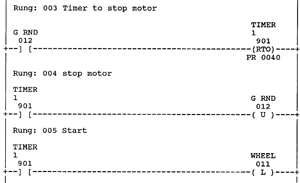
- Background
- Clojure is a new functional language that executes on the JVM, and has recently come into high demand as a professional implementation platform.
http://onlinelabor.blogspot.co.uk/2012/02/high-wage-skills-on-odesk-or-why-you.html
- New research by Sam Aaron and Jeff Rose has created a Clojure extension for real-time applications called Overtone (see
http://vimeo.com/42540495)
- Although originally developed for time-based description of musical structure, Overtone includes explicit models of time that potentially make it well-suited to industrial real-time control applications.
- Objective
- The goal of this project is to create a graphical front-end to
Overtone programs, for example in a format related to the
ladder logic
diagrams that are traditionally used by engineers to program factory
automation systems. Ladder diagrams are poor in their representation
of time (for example, they can suffer from race conditions), meaning
that an Overtone/Clojure back end may be a good choice to express and
debug execution and timing constraints.
- Suggested work programme
-
The first step will be to learn Clojure, and create an Overtone
simulation of the mechanical behaviour of a simple assembly line - for
example a rotating stamp, short conveyor belt and packing
robot. Timing and mechanical variability will be expressed in
Overtone, resulting in a time sequence of simulated sensor outputs to
be used by an automated controller.
-
The next step will be to create a graphical interface in ladder logic
form, that can be edited by the user to define responses to the sensor
outputs. This interface can be created in Java, with a Clojure back
end that generates Clojure code equivalent to the ladder logic.
-
Finally, the ladder logic controller will be connected to the assembly
line simulation, in order to test the ladder logic program under
various conditions of machine performance and simulated faults.
-
As an extension, the simulated assembly line can also be presented to
the user as a Java animation, so that the performance of the
controller can be viewed as a live animation. In principle, the
assembly line could also be configured via a graphical interface,
although this would most likely be beyond the scope of a Part II
project.
- Evaluation:
-
Take a small number of test cases based on specifications of actual
machines, and demonstrate that these can be simulated, and the real-
time simulation correctly controlled, using the system. Conduct
simulated experiments in which the relative timing of machine
components is varied, with randomly injected fault conditions
corresponding to component failure.
- The success criterion is for the control logic should operate as
expected within a defined safety/performance envelope, over a range of
simulation conditions. The evaluation phase will collect simulation
data in order to demonstrate that this goal has been reached.
- Design of evaluation scenarios will involve some discussion with
one or more engineers from a specialist industrial control company
such as
Quin Systems
or
TAP Biosystems.
An optional additional evaluation
exercise could evaluate the relative usability of Clojure and ladder
logic with respect to other automation languages used by companies
like these.
- Contact:
- sja55@cl.cam.ac.uk, or afb21@cl.cam.ac.uk for MPhil
Video Processing Language for the Raspberry Pi
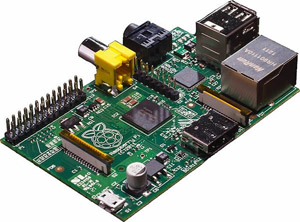
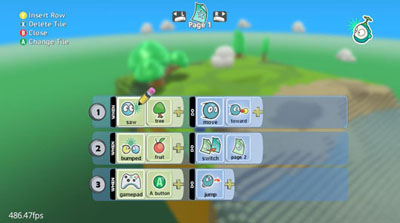
- Background
- The Raspberry Pi architecture essentially provides a set-top box
with an end-user programmable architecture. However, most users of the
device are not yet exploiting its video processing capabilities. In
part, this is because the programming APIs for video codecs under
Linux are not accessible via educational programming languages like
Scratch.
- Objective
-
The objective of this project is to extend an existing visual
programming language with syntax to support live video processing. The
general syntactic style could be based on systems such as Microsoft
Research
Kodu (pictured),
although several alternatives are also available within the Computer
Laboratory.
- Suggested work programme
- First step will be to experiment with the existing API to video
codecs used on the Raspberry Pi, and evaluate the performance of the
GPU under live transformations such as image scaling and warping,
streaming from online video sources, processing of input from a camera
module, and compositing of video data with 2d or 3d graphic
renderings. Based on this evaluation, a selection of end-user
programmable functions will be designed that are suitable for the
Raspberry Pi graphics architecture.
- A visual language syntax will then be selected, derived from one
of a number of data flow, functional and constraint languages that
have been used for similar signal processing and image processing tasks
in the past.
- A minimal visual syntax will be defined. In order to keep the
scope of the project manageable, it is important that the initial
syntax be sufficient only to support the programmable functions and
their parameters, with sufficient expressiveness to modify and bind
alternative values under user-program control (possibly extended via
external I/O to allow users to create novel physical controllers).
- A basic editor for this visual syntax will be implemented using
the graphics facilities on the Raspberry Pi. Ideally, this should
allow dynamic drawing and drag and drop of syntax components, but if
necessary can be keyboard controlled. Dynamic composition of programs
can be considered as an extension in the project plan.
- A more ambitious extension would be to enhance the language syntax
with more general purpose compute functions, for example sufficient to
express a simple algorithm animation such as Quicksort using basic
video blocks, or create turtle-graphics style geometry.
- Evaluation:
- A test suite will be defined for the language, representing a
range of end-user video-processing scenarios (mashups, live VJ
performance, creation of titles and fades etc). This will be validated
by interviews with a small number of sample users. The main success
criterion will be the successful creation of sample programs in the
new language that demonstrate the video processing behaviours in the
test suite.
- As an extension, a user study could be carried out with a small
sample of typical users, comparing the usability of the new language
to others in this class.
- Contact:
- alan.blackwell@cl.cam.ac.uk
Click to return to Alan
 Blackwell's home page.
Blackwell's home page.







